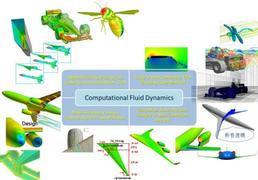Seminar 21st February 2011 3 p.m. University of Southampton, Building 13/Tizard, Room 3017
Block-Structured Cartesian Mesh CFD Solver for Aerodynamic and Aeroacoustic Computations
Daisuke Sasaki
Tohoku University
- Web page
- http://www.ad.mech.tohoku.ac.jp/~sasaki/
- Categories
- Acoustics, CFD, Computer Science, HPC, Scientific Computing
- Submitter
- Petrina Butler
Institute of Sound and Vibration Research (ISVR) Seminar: http://www.isvr.soton.ac.uk/index.htm
ALL WELCOME
Speaker:
Daisuke Sasaki
Aerodynamic Design Laboratory
Department of Aerospace Engineering
Tohoku University
Abstract
Nowadays, parallelization is one of key technologies to accelerate large-scale numerical computations. Although the performance of each high-performance computer system rapidly increases every year, the performance development has been accomplished as the increase of the number of processors in a system. Nowadays almost all the computers in Top 500 have more than thousands of processors, and this trend will be continued in the future. Therefore, parallel computational techniques for massive number of processors will be one of significant tasks to accelerate each application.
We have proposed the Building-Cube Method (BCM) to utilize massive number of processors effectively for various numerical simulations of fluids. The approach is to divide entire flow domain into sub-domains named ‘Cube’. Since each Cube is composed of the same number of equally-spaced Cartesian mesh, the computational load is equally distributed among Cubes. This feature realizes efficient and simple parallelization for mesh generation and flow simulation. The tactics of the BCM is to simplify the algorithms in all stages of flow computation (mesh generation, numerical simulation and post-processing) to conduct large-scale computations on near-future high-performance computers. In the presentation, the capability of BCM method for complicated geometries will be shown. The BCM meshing for 200 million cells around a Formula 1 car model is completed within a few minutes in a PC. BCM incompressible flow solver and Curle’s equation is applied to an aircraft landing gear model to investigate the effect of detail components such as a torque link toward flows and aerodynamic sound. Other research activities in the group will be also slightly presented if time permits: aerodynamic design optimization of Over-The-Wing-Nacelle-Mounted aircraft, unsteady flow data compression, etc.
Contact
Jeremy Astley
Professor in Computational Aeroacoustics
Institute of Sound and Vibration Research
University of Southampton SO17 1BJ
Phone +44 23 8059 7038; fax +448059 3190; email rja@isvr.soton.ac.uk
